Tanzania is often touted as one of the best places in the world to go on safari. And with good reason. This diverse east African country houses 22 national parks which take up approximately 15% of the total land area in Tanzania.
Tanzania is home to the world-famous Serengeti National Park as well as the magnificent Ngorongoro Crater, sometimes referred to as the eighth natural wonder of the world.
However, the time of year that you visit can have a big impact on your experience, therefore it’s crucial that you research the best times to visit Tanzania before you make your decision.
January Ratings Overview
Below are January’s ratings for wildlife, the great wildebeest migration, Zanzibar, busyness, and weather.
- Excellent
- Good
- OK
- Poor
Wildlife
Migration
Zanzibar
Busyness
Weather
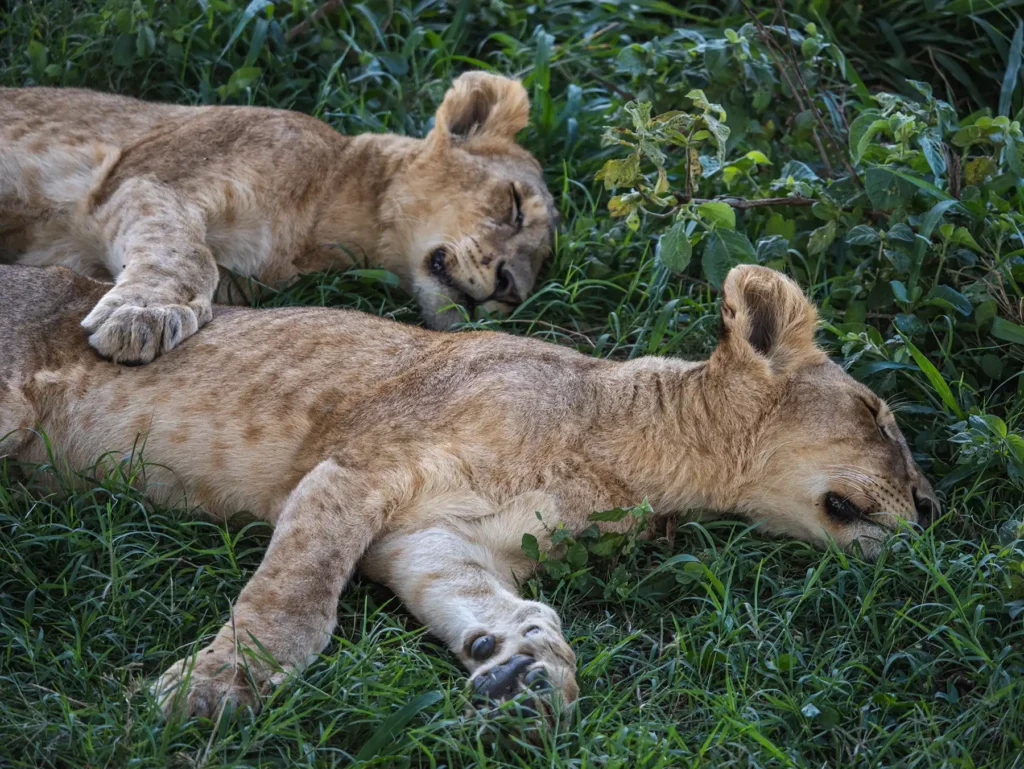
In this article we’re going to talk specifically about what it’s like to visit Tanzania in January and if I’d recommend it.
First thing’s first.
Is January a Good Time to Visit Tanzania?
The simple answer is yes!
January is classed as shoulder season – it’s nowhere near as busy as the summer months (July to September) and therefore the parks are quieter and you can also get better prices on your lodging.
Despite being in shoulder season, the weather is still decent. January falls in what is classed as the short dry season, meaning rainfall is limited. It is however hotter than the long dry season which may not be as favourable for some travellers. I’ll talk more about the weather in detail below.
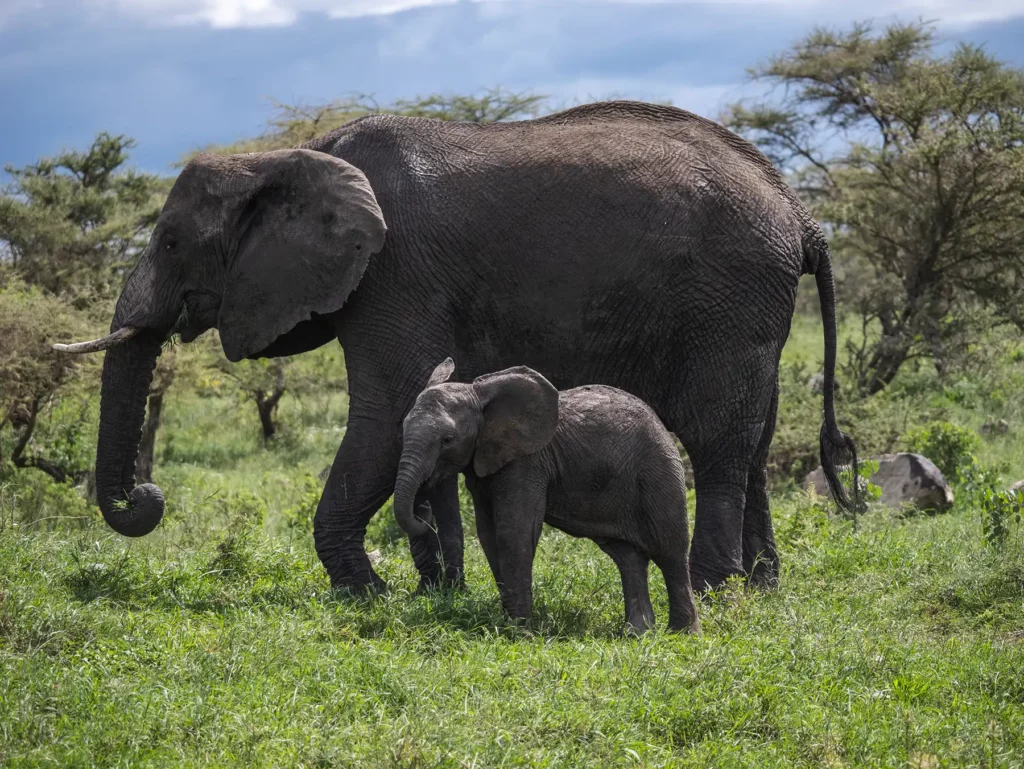
In terms of wildlife sightings, January is a great time as it’s a time of new life. Baby animals will dot the plains and are simply adorable to watch. The abundance of prey means that the predators are never too far away, making this a fantastic time of year to spot them.
This is a brief overview of Tanzania in January. However I will go into much more detail throughout this article.
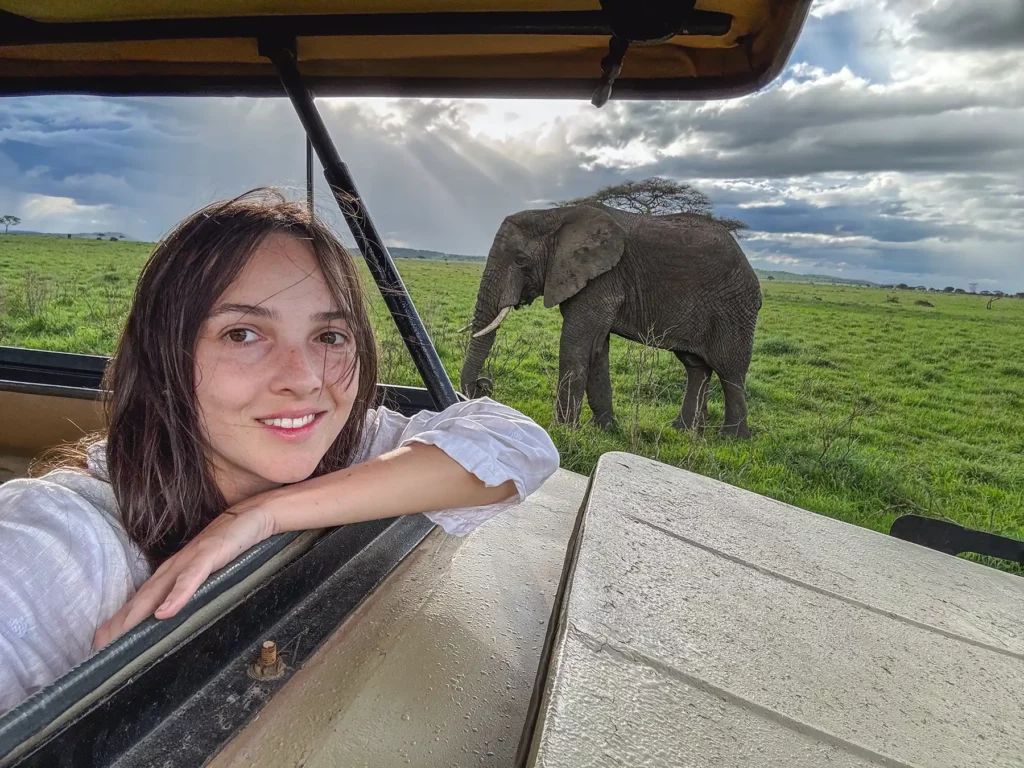
Embark on the Safari of Your Dreams
Save time and ensure an incredible safari experience by getting quotes from my recommended local safari companies
I’m here to make booking your perfect safari quick, easy and risk-free.
Join the rapidly growing tribe of over 1,000 travellers who’ve booked their dream safari using my insider tips and recommendations.

It takes under 60 seconds to fill out the form and in under 48 hours you will receive multiple, no-obligation proposals from my favourite local tour operators with glowing online reviews.
Get your free no-obligation safari quotes and my top safari tips and recommendations
In This Guide
- Weather in Tanzania in January
- Is January Good for a Safari in Tanzania?
- Where is the Great Wildebeest Migration in January?
- Is January a Good Time to Visit Zanzibar?
- Is January a Good Time to Hike Kilimanjaro?
- Is January a Good Time for Birding in Tanzania?
- Events in Tanzania in January
- Costs of Visiting Tanzania in January
- Best Places to Go on Safari in Tanzania in January
- Best Itineraries for Tanzania in January
- Final Thoughts

Weather in Tanzania in January
The end of December marks the end of the short-rains. The skies are now clear, brilliant sunshine shining down over east Africa, illuminating the now vibrant green landscape. What once was an arid scrubland has been transformed into a vista of lush vegetation.
January falls into the short dry season, days characterised by limited rainfall (although a few spells of rain are still possible) compared to the proceeding short-rains of November and December and the still-to-come long-rains of March and April.
In January you can expect clear sunny days.
January (as well as February) however is the hottest time of year in Tanzania, the average temperatures ranging between 27 °C (82 °F) at the warmest and 13 °C (55 °F) at the coolest in the north.
Despite this being the warmest time of year, the temperatures are still relatively comfortable, especially in northern Tanzania where the altitudes can get pretty high and thus the temperatures don’t get too hot.
| Tanzania location | Daytime temperatures | Nighttime temperatures |
|---|---|---|
| Coastal Areas (e.g., Dar es Salaam, Zanzibar): | 28°C to 32°C (82°F to 90°F) | 23°C to 25°C (73°F to 77°F) |
| Northern Safari Circuit (e.g., Arusha, Serengeti, Ngorongoro): | 25°C to 28°C (77°F to 86°F) | 13°C to 20°C (59°F to 68°F) |
| Southern and Western Tanzania (e.g., Selous, Ruaha, Katavi) | 30°C to 35°C (86°F to 95°F) | 20°C to 25°C (68°F to 77°F) |
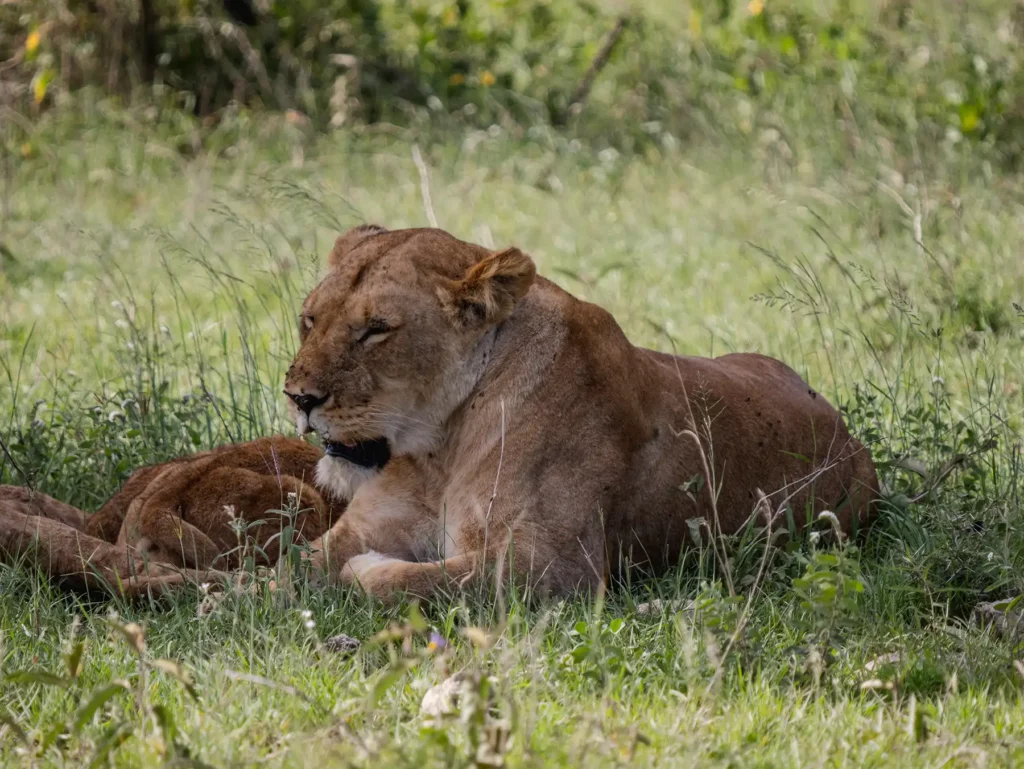
Is January Good for a Safari in Tanzania?
Yes, January is a great time for a safari in Tanzania! There’s so much wildlife to see in Tanzania’s key national parks at this time of year as the proceeding short-rains have encouraged new plant growth, making it the ideal time for many animals to give birth.
Whilst the foliage is thicker in January than in the long dry season, which some argue make it harder to see wildlife, there are still ample opportunities to spot wildlife, especially in the Serengeti and Ngorongoro Crater, where the plains are vast, completely counteracting this objection.
Mid-January is the start of the wildebeest calving season. On the vast green plains of southern Serengeti, thousands of wildebeest per day will start giving birth. Watching the newborn wildebeest shakily take their first steps is a tender sight to witness. It’s then magical to see them running after just a couple of days.
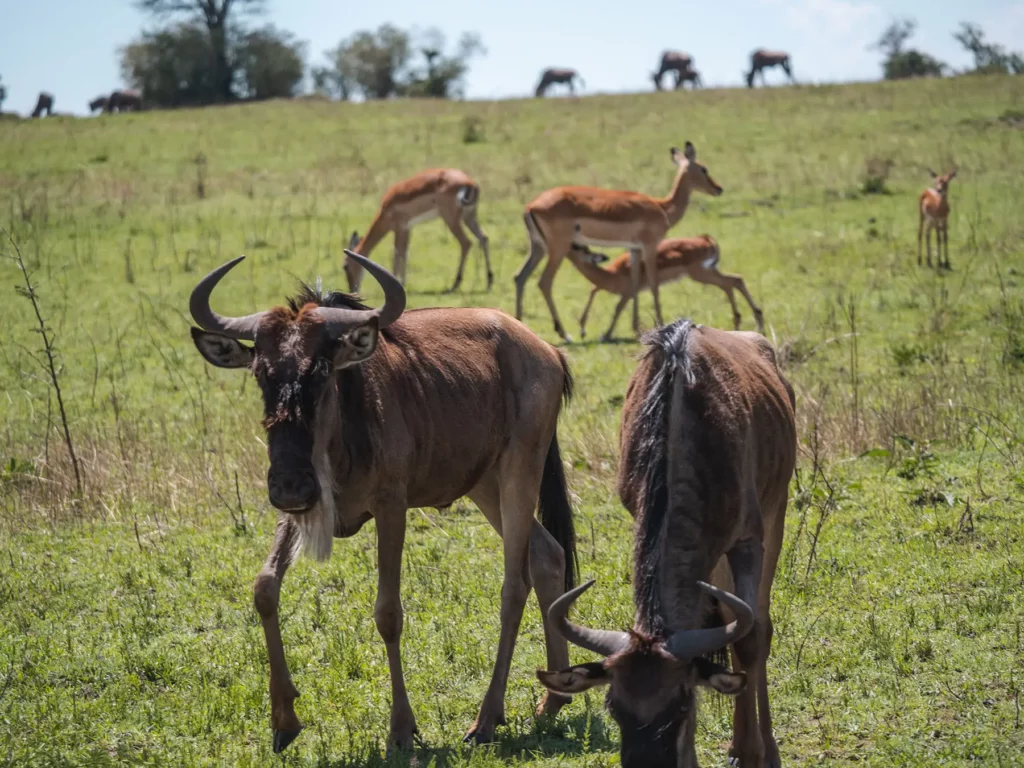
Wildebeest aren’t the only species to give birth at this time of year. New life is everywhere! Tanzania’s famous predators will also be taking care of their own broods. If you’re lucky, you may be able to spot frolicking lion cubs or even some cheetahs.
The abundance of prey makes January a time of plenty for the predators. In fact this is one of the best times of year to catch them hunting.
Another great safari destination in January is Ngorongoro Crater. This magical destination holds the same density of wildlife throughout the year, animals not tending to migrate to or from this spectacular caldera. The lack of vegetation in the crater means that wildlife viewing is always great as there are few places for the residents to hide.
If you’re interested in witnessing the wildebeest calving in the Serengeti and visit the Ngorongoro Crater as part of a 5-day itinerary, you may be interested in my recommended wildebeest calving itinerary.
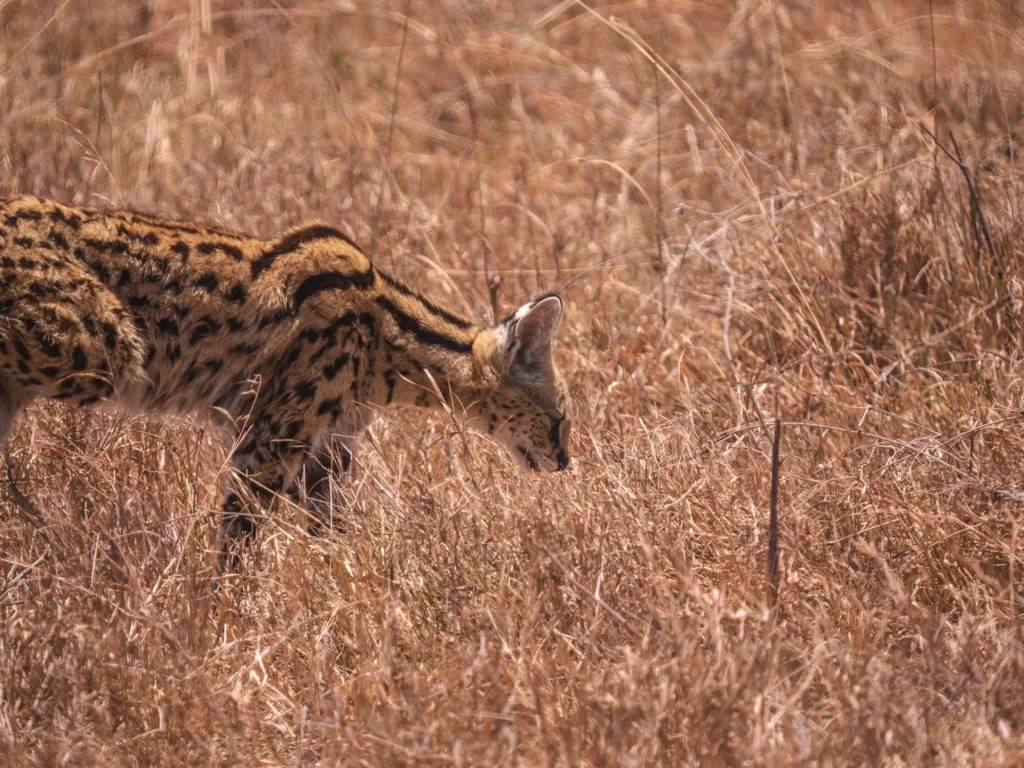
Whilst Tarangire has historically only been recommended if you are visiting during the long dry season (June to October), I’d be inclined to disagree and instead argue that it is worthwhile visiting during January.
The reason that many people only recommend Tarangire for the long dry season is because large migratory herds can be found here. Whilst it’s true that many herds leave for the other half of the year, huge quantities of animals still remain.
The foliage is denser in Tarangire during January compared to the long dry season but very little can conceal Tarangire’s flagship inhabitant, the African elephant.
I’ve heard countless reports of visitors still encountering huge numbers of elephants in Tarangire in January and one of the local tour operators that I have used (and would definitely recommend!) shared footage with me of a couple of lionesses hunting a zebra, taken in January in Tarangire.
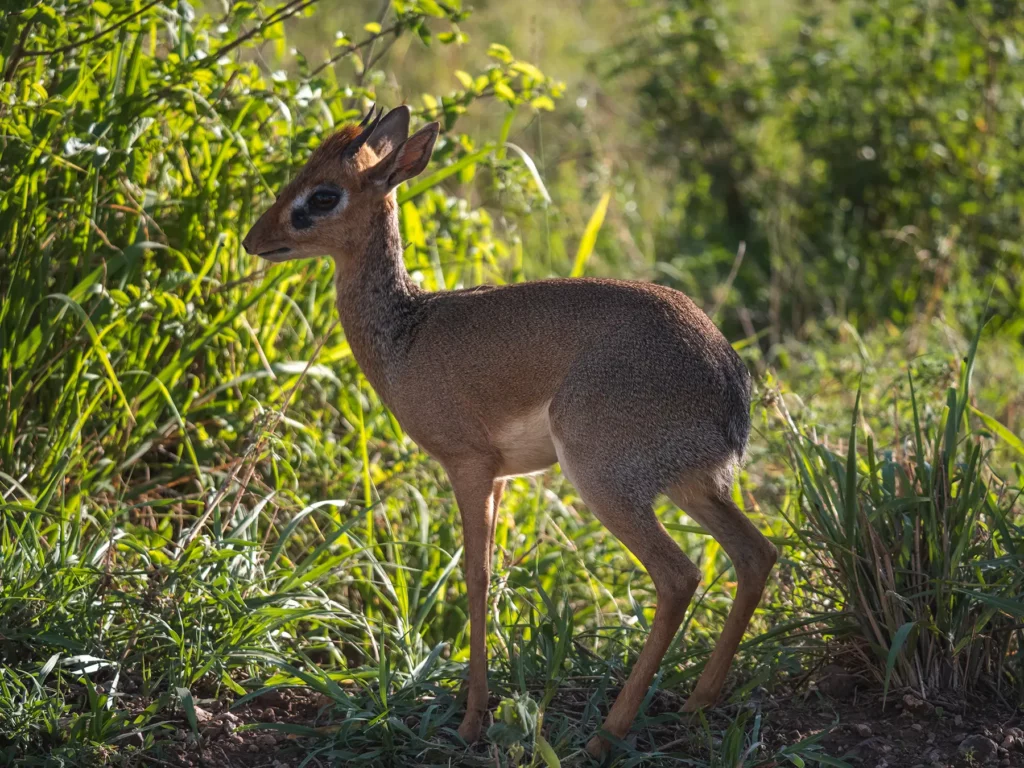
Save Time and Ensure an Incredible Safari Experience
Get quotes from the local safari companies I use to organise my own trips.
You’ll join the rapidly growing tribe of over 1,000 travellers who’ve booked their dream safari using my insider tips and recommendations.
Where is the Great Wildebeest Migration in January?
In January the great wildebeest herds congregate to the very south of the Serengeti, the majority of them settling in the Ndutu Plains which actually falls in the Ngorongoro Conservation Area, just below the Serengeti National Park.
It’s here that they start to give birth, the lush grass providing them and their young the strength that they need to begin the journey back north again in just a couple of months.
Mid-January to late-February is one of the most exciting times to view the great migration. Up to 8,000 wildebeest calves are born each day. Once they take their first breaths, it’s then a race for them to get to their feet and learn to run, a skill that they need to hone as quickly as possible.
The abundance of new life makes January a time of plenty for the Serengeti’s predators. Lions, cheetahs and leopards are never too far away from the wildebeest herds, looking for the opportunity to catch an easy meal so that they can feed their own young.
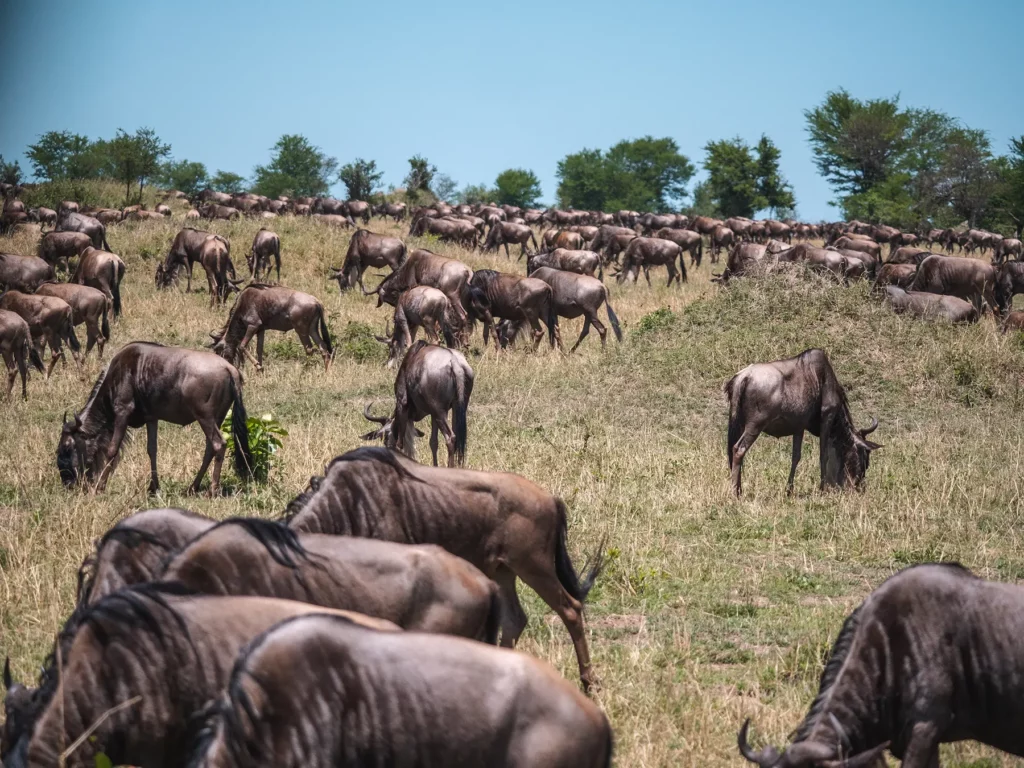
Is January a Good Time to Visit Zanzibar?
Yes, January is a very good time to visit Zanzibar!
Whilst the dry season between June to October is generally considered to be the best time to visit Zanzibar because of the consistent warm, dry weather, January in reality isn’t too different.
It will be slightly hotter and the chance of encountering small bursts of rain is more of a possibility than in the dry season, though it is still unlikely. January typically has a mere 7 days of rainfall in January. In the dry season, you can expect around 5 days of rain, so there really isn’t much difference.
One big bonus of visiting Zanzibar in January is that January is considered shoulder-season. Tourist numbers are a lot less than between June to October which means, not only will you have more peace and quiet but the hotels are offering better rates.

Another benefit of visiting Zanzibar in January is the underwater conditions. The clarity of the water at this time of year is perfect for snorkelling and scuba diving.
In January temperatures in Zanzibar are very warm. In fact, January is often one of the hottest months of the year. You can expect highs of 32 °C (90 °F) and lows of 24 °C (75 °F). The temperature of the ocean in January is around 28 °C (83 °F).
The humidity in January can get quite high. Expect around 77% humidity.
If you are planning on visiting Tanzania in January then I’d highly recommend an itinerary that includes both mainland Tanzania and Zanzibar. View my 7-10 day Tanzania itinerary suggestions.
| Location | Daytime temperatures | Nighttime temperatures |
|---|---|---|
| Zanzibar | 28°C to 32°C (82°F to 90°F) | 23°C to 25°C (73°F to 77°F) |
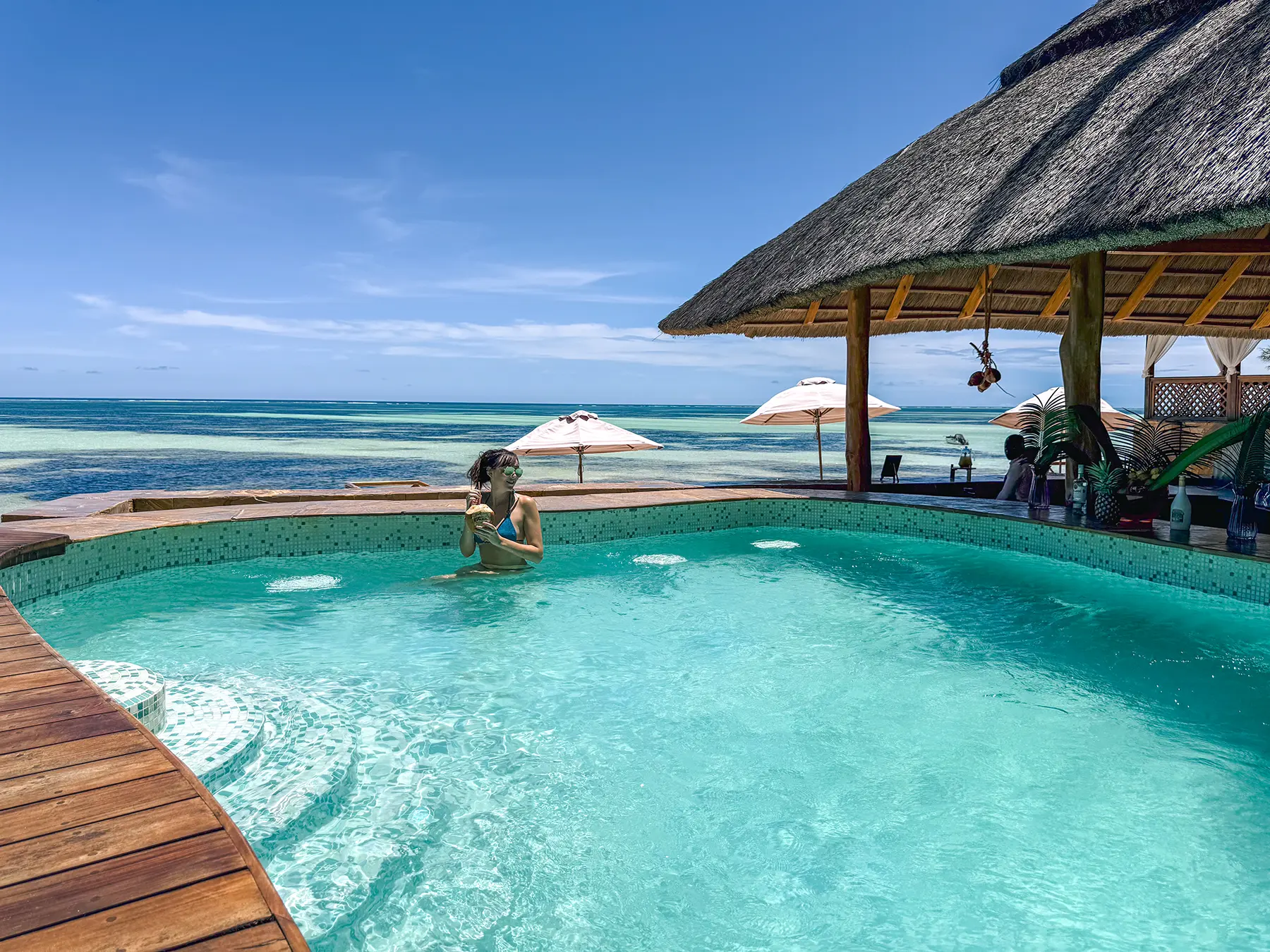
Is January a Good Time to Hike Kilimanjaro?
Yes, January is in fact one of the best times to hike Kilimanjaro!
January, along with February, are the warmest months of the year and therefore offer the most pleasant temperatures if you are planning on summiting Kilimanjaro.
At this time of year, you can expect clear sunny skies for most of the day, providing good visibility. There is a slight chance of rain in the late afternoon and evenings but the chances are considerably less than the preceding months of November and December.
Despite being the best time of year to climb Kilimanjaro, January is not as busy as the long dry season between June and October. This is a great benefit of hiking Kilimanjaro in January as you don’t have to contend with crowds on your climb.
Below are the average temperatures in Moshi, the nearest town to Kilimanjaro, during January. The temperature will gradually decrease, the higher you climb up Kilmanjaro.
| Location | Daytime temperatures | Nighttime temperatures |
|---|---|---|
| Moshi | 29°C – 34°C (84°F – 93°F) | 18°C – 21°C (64°F – 70°F) |
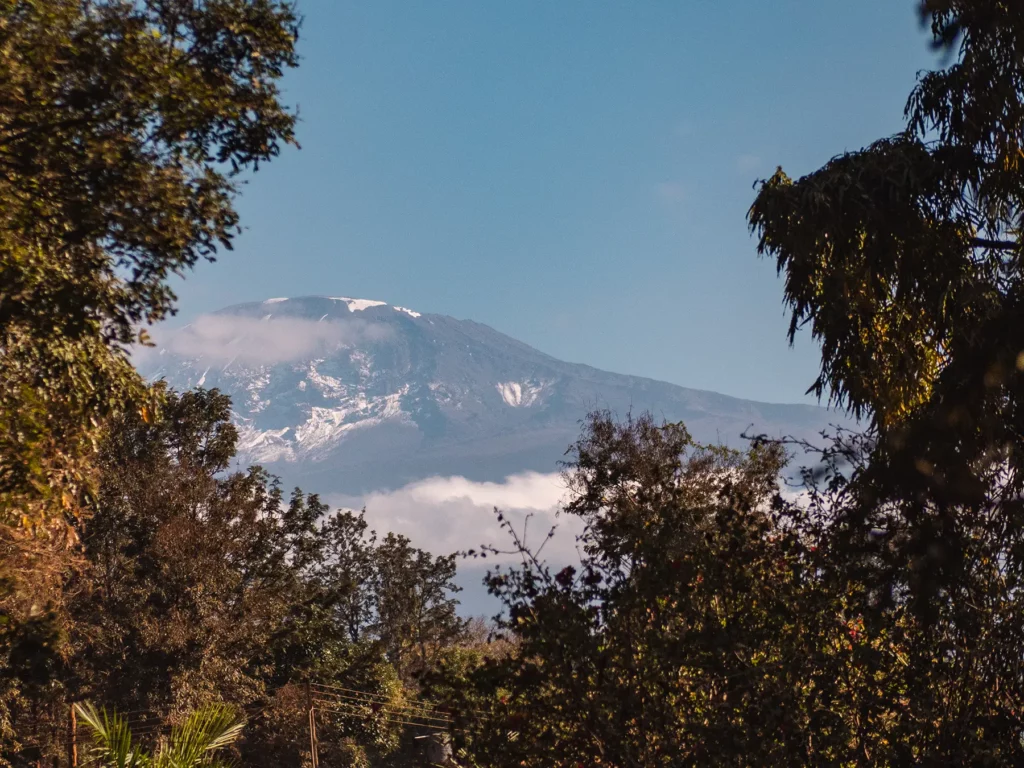
Is January a Good Time for Birding in Tanzania?
January is a great time for birding enthusiasts as migratory birds are arriving in Tanzania, fleeing the cooling temperatures in the northern hemisphere.
Some of the migratory birds that you can expect to see are the European Bee-eater, White Stork, Barn Swallow, Yellow Wagtail, Common Sandpiper and Osprey.
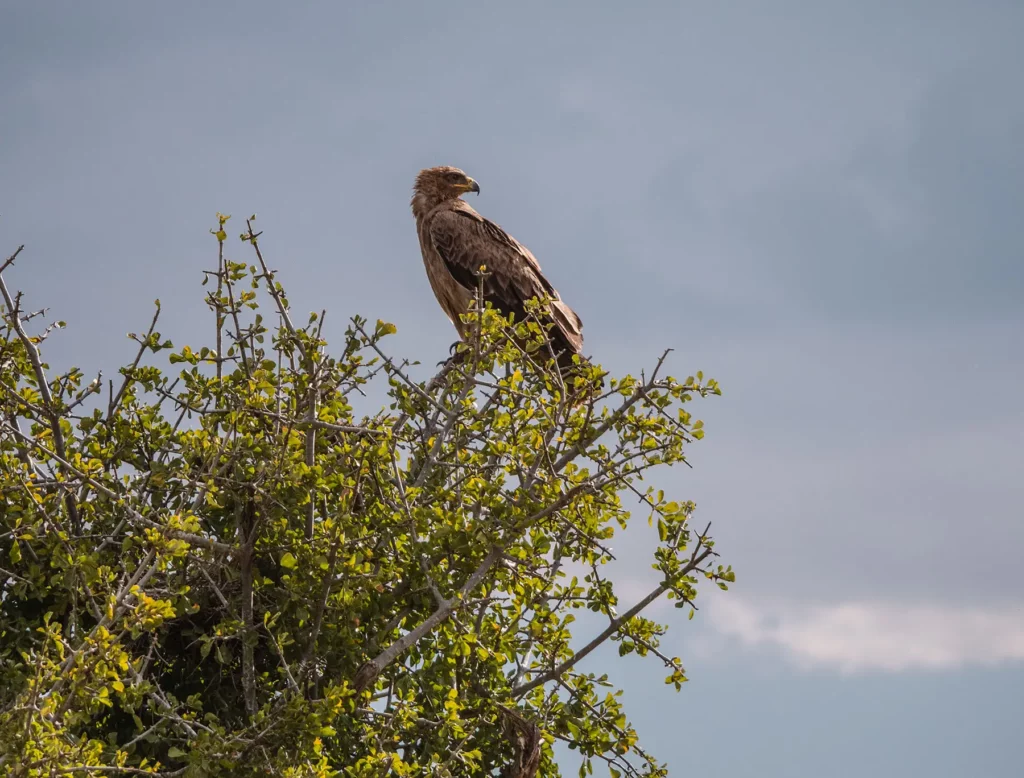
Events in Tanzania in January
The Wanyambo Festival is one of the key events to take place in Tanzania in January. Taking place in early January each year, this colourful and energetic festival provides you with one of the best opportunities to witness Tanzanian culture.
The 4-day festival takes place in Makumbusho Village Museum in Dar es Salaam. Traditional dance, music, food, art and costumes are showcased at this electric event. It’s one of the most popular events of the entire year and is simply unmissable if you are near Dar Es Salaam in January.

Costs of Visiting Tanzania in January
Although January is significantly quieter than the long dry season (June to October), it still isn’t considered low-season and therefore the costs of visiting Tanzania in January are similar to visiting between June and October.
Park fees are the same year round with the exception of the low season (long rainy season) between mid-March and mid-May so there will be no cost saving on park fees in January, despite it being shoulder-season.
Lodges and hotels typically only lower their prices for the long rainy season (March to May) and the short rainy season (November to mid-December).
The only exception to this would be when it comes to flights. As you are flying outside of school holidays, you may be able to find better flight deals.
A typical private safari in Tanzania in January excluding flights starts at $300 per person today for a budget camping safari (assuming you are a group of 2 people. The price will be higher if you are travelling solo).
A private mid-range safari for two people starts at $400 per person per day.
For a more detailed cost breakdown, I have an extensive article on Tanzania safari costs.

Embark on the Safari of Your Dreams
Save time and ensure an incredible safari experience by getting quotes from my recommended local safari companies
I’m here to make booking your perfect safari quick, easy and risk-free.
Join the rapidly growing tribe of over 1,000 travellers who’ve booked their dream safari using my insider tips and recommendations.

It takes under 60 seconds to fill out the form and in under 48 hours you will receive multiple, no-obligation proposals from my favourite local tour operators with glowing online reviews.
Get your free no-obligation safari quotes and my top safari tips and recommendations

Best Places to Go on Safari in Tanzania in January
In my opinion, January is one of the best times of year to embark on a Tanzanian safari. However it’s important to note that some locations are better than others at this time of year for wildlife viewing.
Below I’m going to list the best places to view wildlife in Tanzania in January which you need to add to your itinerary.
1. Southern Serengeti (Ndutu Plains)
Without a doubt the best place to go on safari in Tanzania in January is the southern Serengeti. This is the stage of the Great Wildebeest Migration at this time of year. Millions of wildebeest can be seen, grazing in large herds as they prepare for the birthing season.
I’d definitely recommend coming in mid to late January as the birthing season will typically be in full swing, over 8,000 calves born on average every day.
Other animals, including Tanzania’s predators are never too far away from the action. This is in fact one of the best times of year to catch big cats hunting, due to the abundance of easy prey.
The Serengeti is the best place to see wildlife in Tanzania in my opinion. Everywhere you look, there is typically something to see, whether that’s a family of elephants or a leopard dozing in a tree.
The Ndutu Plains can be found at the very bottom of the Serengeti, in an area that’s actually known as the Ngorongoro Conservation Area.
You can reach Ndutu either by road (around a 5 hour drive from Arusha) or via small plane which takes an hour from Arusha.
Visiting the southern Serengeti can easily be included as part of a 5-day itinerary or if you have more time, a 7-10 day itinerary.
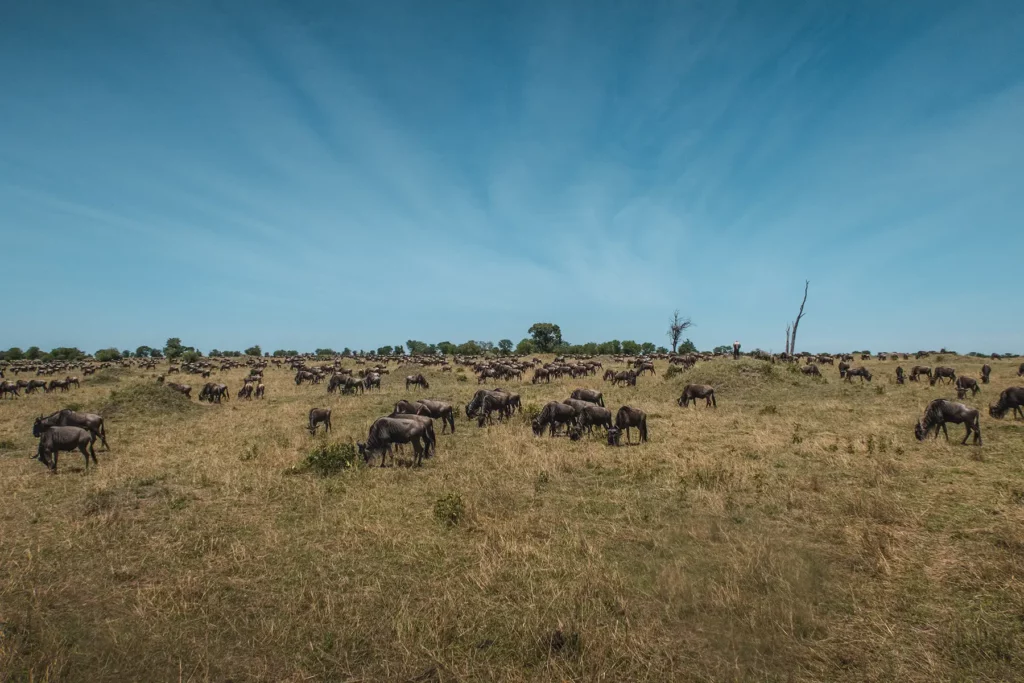
2. Ngorongoro Crater
A UNESCO World Heritage Site, the Ngorongoro Crater is the ancient collapsed caldera of a huge volcano which once stood higher than Kilimanjaro. The crater is the largest unbroken caldera in the world, spanning an area of 102 square miles.
The crater walls tower between 400 and 610 metres (1,312 and 2,000 feet) in height, more than 1.5 times the Empire State Building.
The landscape is nothing short of awe-inspiring. However, it isn’t just the natural beauty of the crater that brings in hundreds of visitors each day. The crater is teeming with wildlife and in fact houses the highest density of lions in the world.
The majority of the crater floor consists of savannah, attracting large quantities of herbivores such as wildebeest, zebras and gazelles, who favour this terrain as it makes it harder for predators to sneak up on them.
Perhaps the highlight of the Ngorongoro Crater is the presence of the black rhino. This is the only place in Tanzania where you can hope to catch a glimpse of this rare creature. 30 black rhinos can be found in the crater.
Ngorongoro Crater can be visited year-round. Unlike with most locations in Tanzania, the animals don’t migrate away from the crater. It would be too challenging for them to climb out of the crater walls plus they perhaps don’t have the desire to leave as the crater provides everything that they could need.
The lack of dense vegetation in the crater means that wildlife viewing is easy all year round.
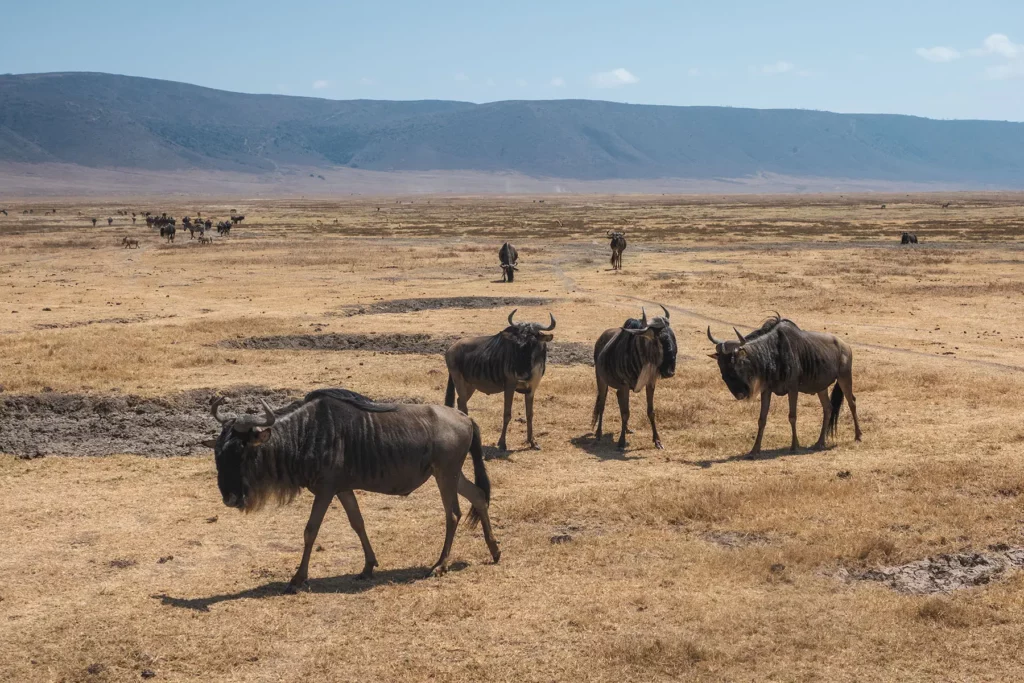
3. Tarangire National Park
In my opinion, Tarangire National Park is severely underrated. Whilst this park is often only recommended for the long dry season (June to October), I strongly believe that the park can be visited at any time of year.
It’s true that in the long dry season there are larger numbers of migratory herds in Tarangire, including elephants, wildebeest, zebras and buffalos. However, a large number of these animals still remain throughout the year.
Tarangire National Park is vastly different from both the Serengeti and Ngorongoro Crater as it consists of long grass and denser foliage. It’s incredibly beautiful and in January the vegetation is even more magical than in the dry season as it will be vibrant and green.
However, not even the densest of bushes can conceal an elephant, Tarangire’s most famous inhabitant.
I went on a safari in Tarangire in the dry season. However, my tour guide (who I highly recommend – you can receive a quote from them here!) showed me footage of the park taken in January, including a clip of some lionesses hunting a zebra. My tour guide explained how they would personally always recommend Tarangire, no matter what time of year it is, as it is fairly consistent for wonderful sightings.
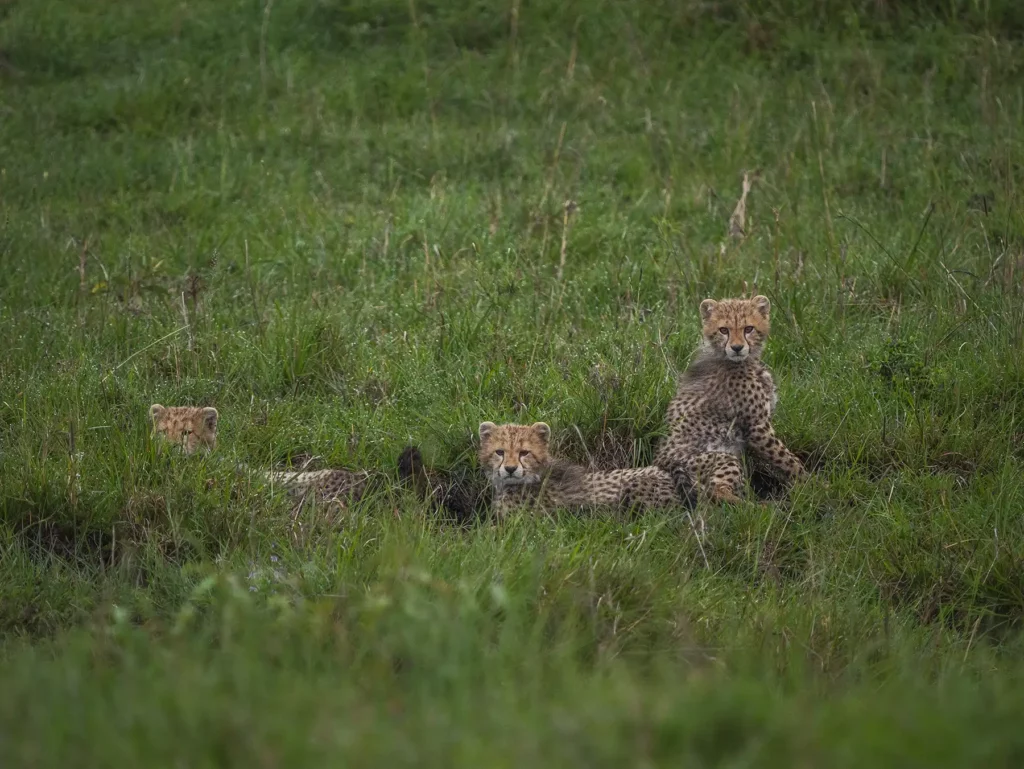
Save Time and Ensure an Incredible Safari Experience
Get quotes from the local safari companies I use to organise my own trips.
You’ll join the rapidly growing tribe of over 1,000 travellers who’ve booked their dream safari using my insider tips and recommendations.
Best Itineraries for Tanzania in January
Whilst a three day itinerary is possible in Tanzania due to the destiny of wildlife, I would recommend a five day or even seven to ten day itinerary, where time and budget permits.
Below are my recommended itineraries for visiting Tanzania in January.
7 Day Best of Tanzania in January Itinerary
This 7 day itinerary will take you to all of Tanzania’s safari highlights, including the Serengeti National Park, Ngorongoro Crater and Tarangire National Park. On this 7 day itinerary, you will have enough time to truly see what all three parks have to offer.
You will then end your adventure with a couple of days relaxing on the tranquil island of Zanzibar.
Itinerary Map
Itinerary starts in Arusha and ends in Zanzibar.
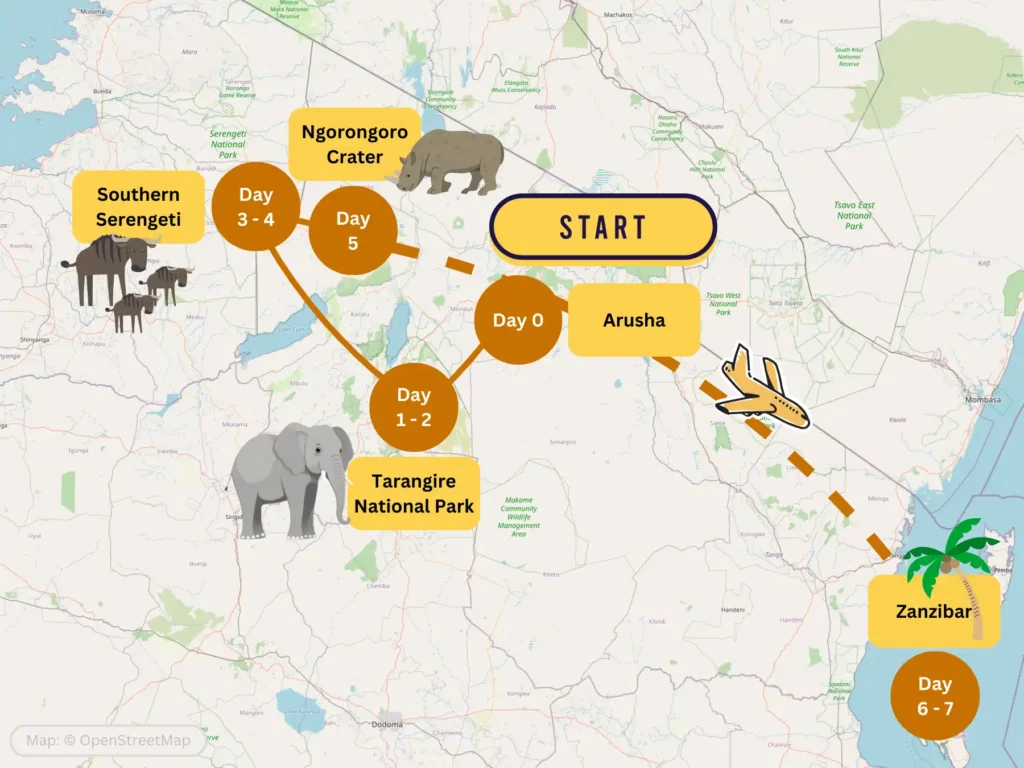
Day By Day Breakdown for my 7 Day January Itinerary
Day 1: Tarangire
Driving time (excluding game drives): 3 hours
You will start your day in the bustling city of Arusha. Your tour guide will meet you at your hotel after some breakfast and you will embark on a 3 hour drive to Tarangire National Park.
Once you have arrived in Tarangire, you will enjoy a full-day game drive through the national park, soaking up the gorgeous vegetation and keeping an eye out for Tarangire’s wildlife.
Elephants, buffalos, giraffes, zebras, impalas and wildebeest are some of the many herbivores that you can expect to see here.
You can find all three of Tanzania’s famous big cats here as well. Lions are the most frequently seen however leopard and cheetah sightings occur as well.
You will stop for a picnic lunch at a gorgeous picnic spot that overlooks the Tarangire River before commencing your safari.
You will spend the night within Tarangire National Park, perfectly positioned for an early-morning game drive tomorrow.
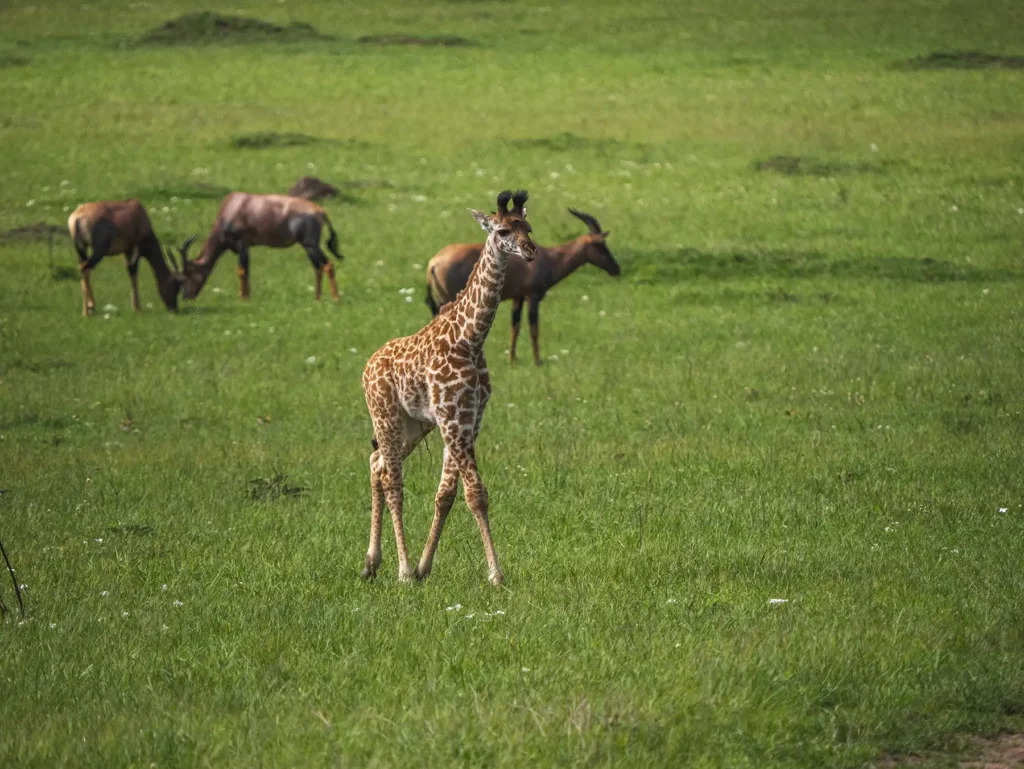
Day 2: Tarangire
Driving time (excluding game drives): 3 hours
You will rise early for a morning game drive. Early mornings are the best time to try to catch predators on the move. This is when you are most likely to see them hunting.
You will then continue your game drive into the day, increasing your chances of seeing everything that Tarangire has to offer. The safari will be broken-up by a picnic lunch.
This afternoon you will then leave Tarangire and journey to the town of Karatu which sits just outside the Ngorongoro Highlands. It’s around a 2-3 hour drive from Tarangire to Karatu.
You will then spend the night in Karatu.
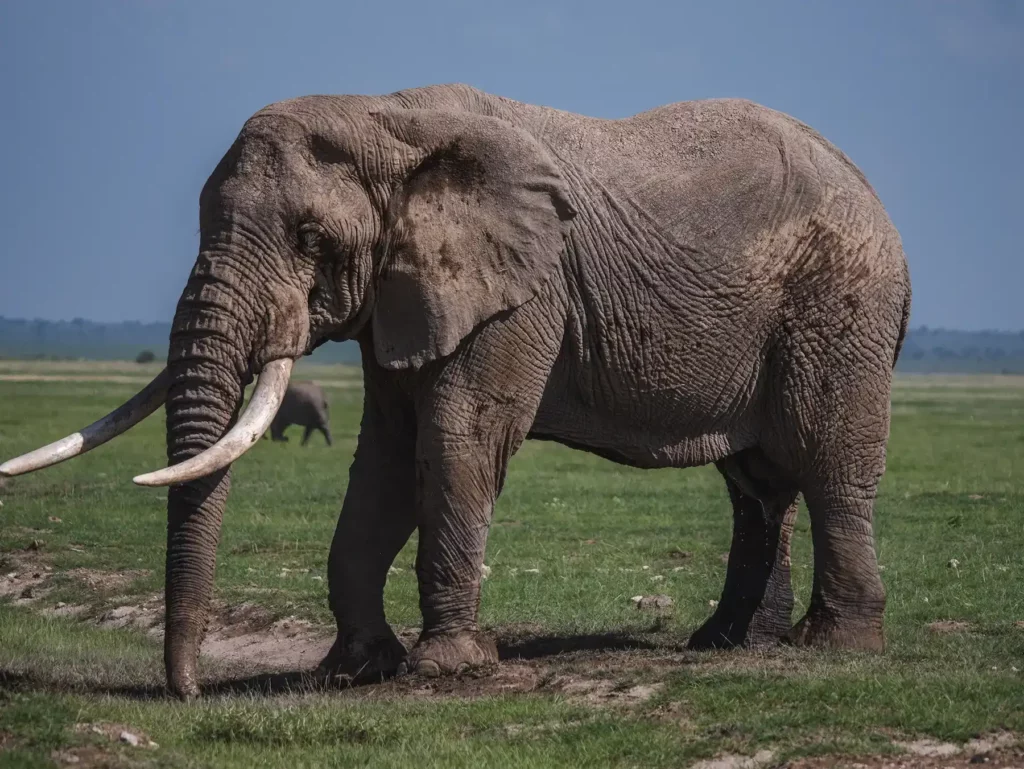
Day 3: Southern Serengeti
Driving time (excluding game drives): 3 hours
This morning you will leave Karatu and enter the Ngorongoro Conservation Area which is just outside the town. It’s a roughly 3 hour drive from Karatu to the Ndutu Plains which are located deep within the conservation area, just below the official gate to the Serengeti National Park.
Once in the Ndutu region, you will get the opportunity to enjoy a full-day game drive. You’ll no doubt be mesmerised by the sheer number of wildebeest you will find here, many with newborns. Also with the great herds are gazelles and zebras, who stick close to the wildebeest to ensure safety in numbers.
As the day draws on and it starts to cool, predators become more active and you may be able to catch them on the move.
You’ll arrive at your accommodation just a stone-throw away from Lake Ndutu just before the sun starts to set.
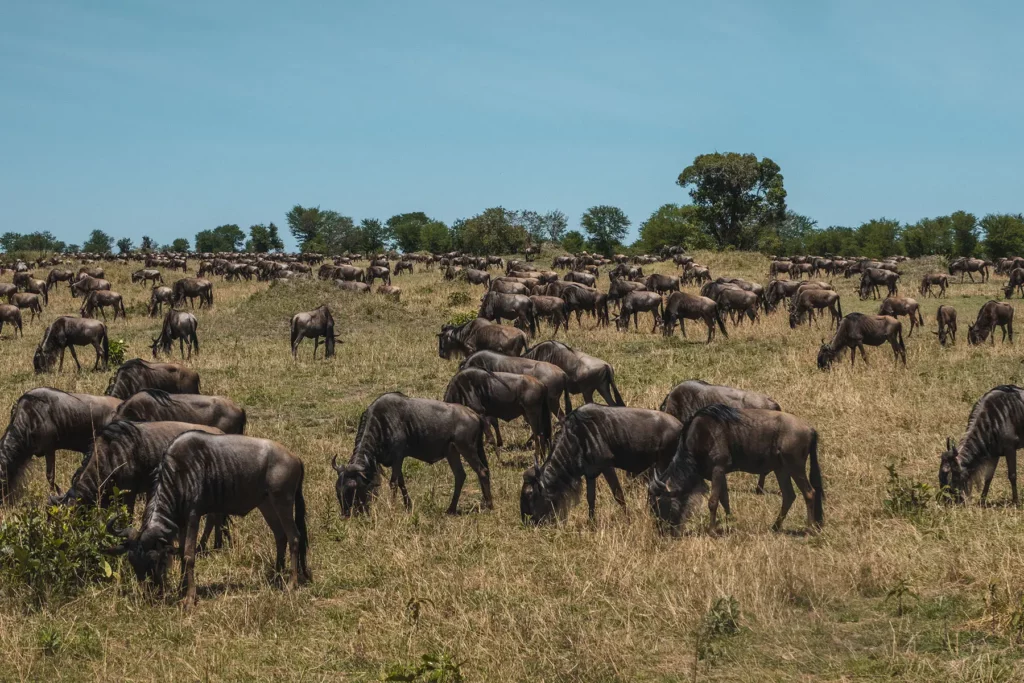
Day 4: Southern Serengeti
Driving time (excluding game drives): 2 hours
This morning you will have the opportunity to embark on a full-day game drive which starts in the early morning, increasing your chances of spotting predators in action. This is the best time to witness them hunting.
You will then continue your game drive through southern Serengeti, stopping for a picnic lunch part-way through the day.
As evening approaches, you will journey to the Ngorongoro Crater. There are a handful of lodges and campsites atop the crater rim, the perfect place to spend the night so that you can descend into the crater first thing tomorrow morning.
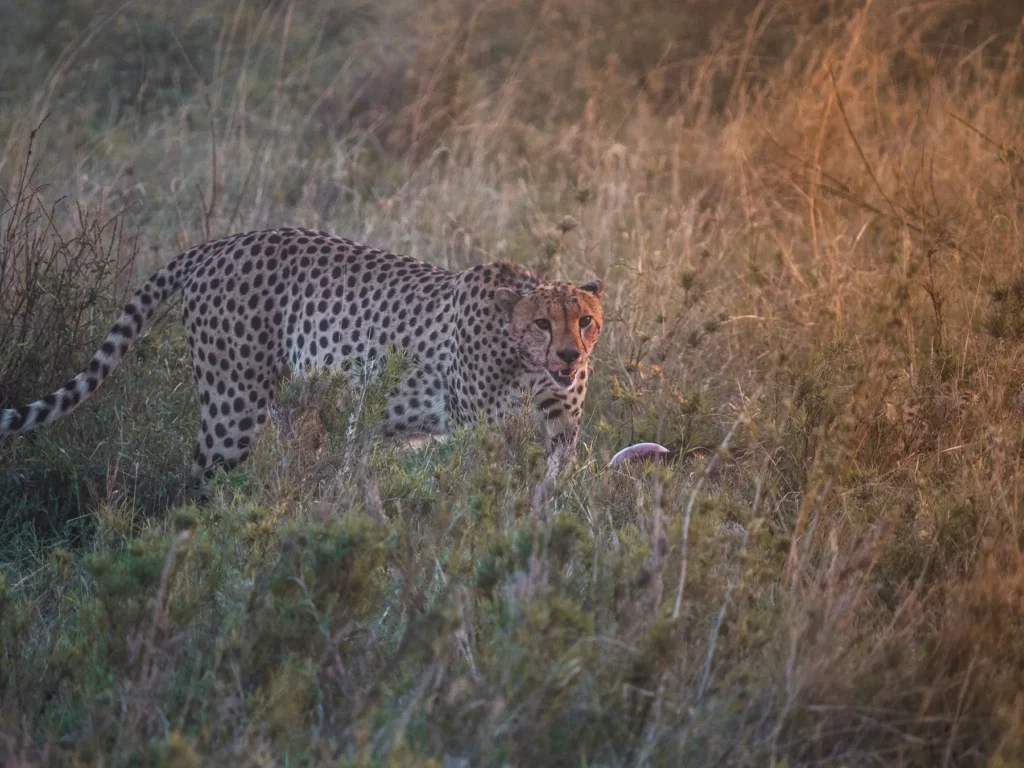
Day 5: Ngorongoro Crater to Zanzibar
Driving time (excluding game drives): 2 hours
This morning you will descend into the magnificent Ngorongoro Crater. I have no doubts that you’ll be left in awe as your vehicle descends and you soak up the unique landscape that stands before you.
Entering the crater in the morning gives you the best chance to try to spot one of Ngorongoro’s 30 resident black rhinos as they tend to stick together in the morning before dispersing as the sun climbs higher in the sky.
The crater is home to a plethora of wildlife. As you experience your full-day game drive, keep watch for elephants, lions, buffalos, zebras, wildebeest, gazelles and much more. One of my favourite sightings in Ngorongoro was a serval family hunting rodents. Servals are small cats which are rare to spot in the daytime.
After your safari, you will ascend out of the crater before journeying to Lake Manyara airstrip which is 1.5 hours away from the crater.
You will then take a short flight from the airstrip to Zanzibar island, where you will spend the night.

Day 6: Zanzibar
Today you will wake up in paradise. Most beaches in Zanzibar sit overlooking crystal clear waters lap against white-sand beaches.
It’s entirely up to you how you spend the day. You may wish to swim in the ocean, enjoy a spot of snorkelling, book yourself in for some scuba diving or perhaps go on a cultural excursion to the island’s capital of Stone Town.
You will spend another night in Zanzibar.
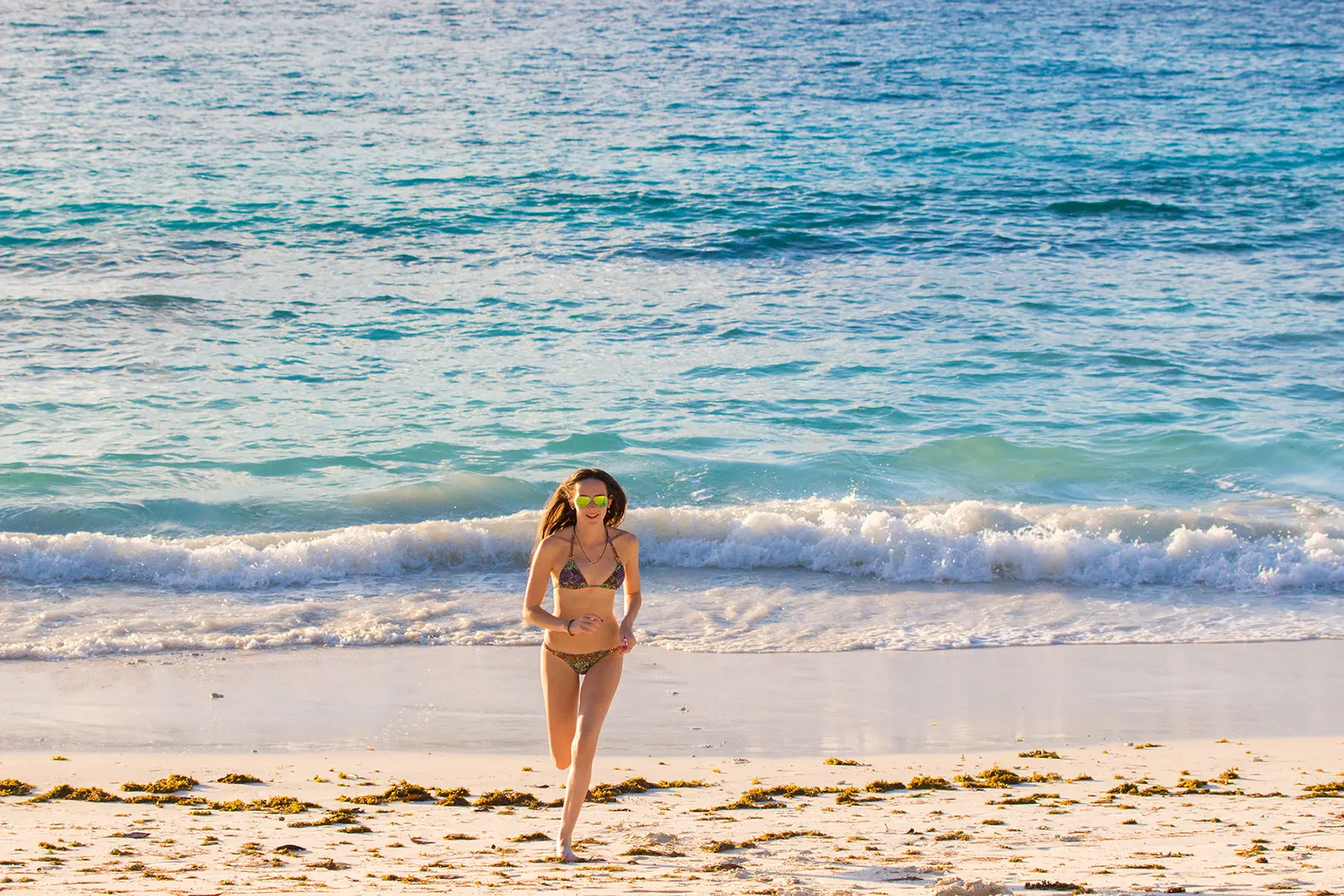
Day 7: Zanzibar
Today is your final day in Tanzania. You can spend the morning doing whatever your heart desires in Zanzibar before catching a flight back home from Zanzibar airport.
Recommended Booking Options For Your 7-Day Tanzania January Safari Itinerary
Private Safari
Most popular & best experience – typical prices for this itinerary start from $280 per person per day.
Visit safarisbyella.com for free quotes from trustworthy local tour companies I use to book my own trips.
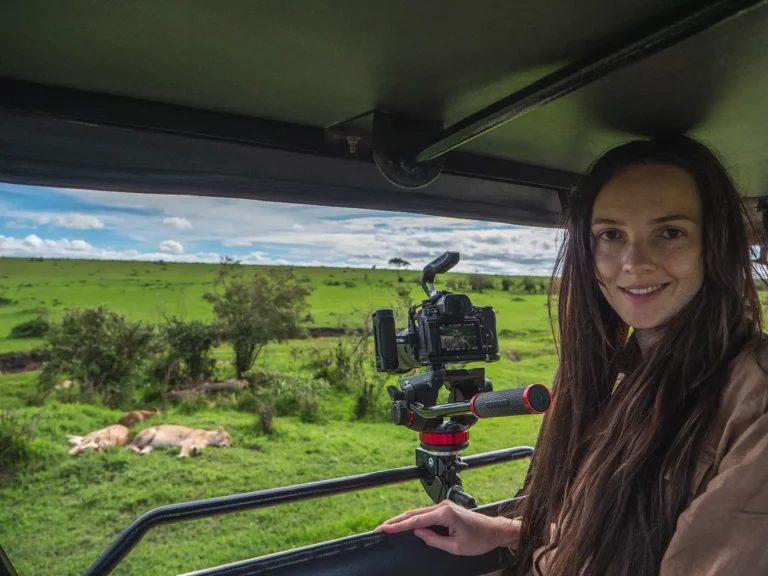
Group (Shared) Safari – Usually Camping
Good for budget or solo travellers – from $200 per person per day.
My recommended Tanzania tour operators only provide private safaris, however, I’ve listed the best and most similar group options for this itinerary, on SafariBookings below.
There are no shared group safaris available which follow this exact itinerary. There are however, some 7 & 8-day group tours available which don’t include Zanzibar so I've included them below.
Click the link below to request quotes for the group safari options on the SafariBookings website.
8-Days Budget Camping Group Safari WITHOUT Zanzibar
7-Days Budget Camping Group Safari WITHOUT Zanzibar
View All My Recommended Group Options Following a Similar Itinerary
5 Day Tanzania in January Itinerary
This 5 day Tanzania itinerary will take you to Tanzania’s safari highlights, including the Serengeti National Park, Ngorongoro Crater and Tarangire National Park.
Itinerary Map
Itinerary starts and ends in Arusha.
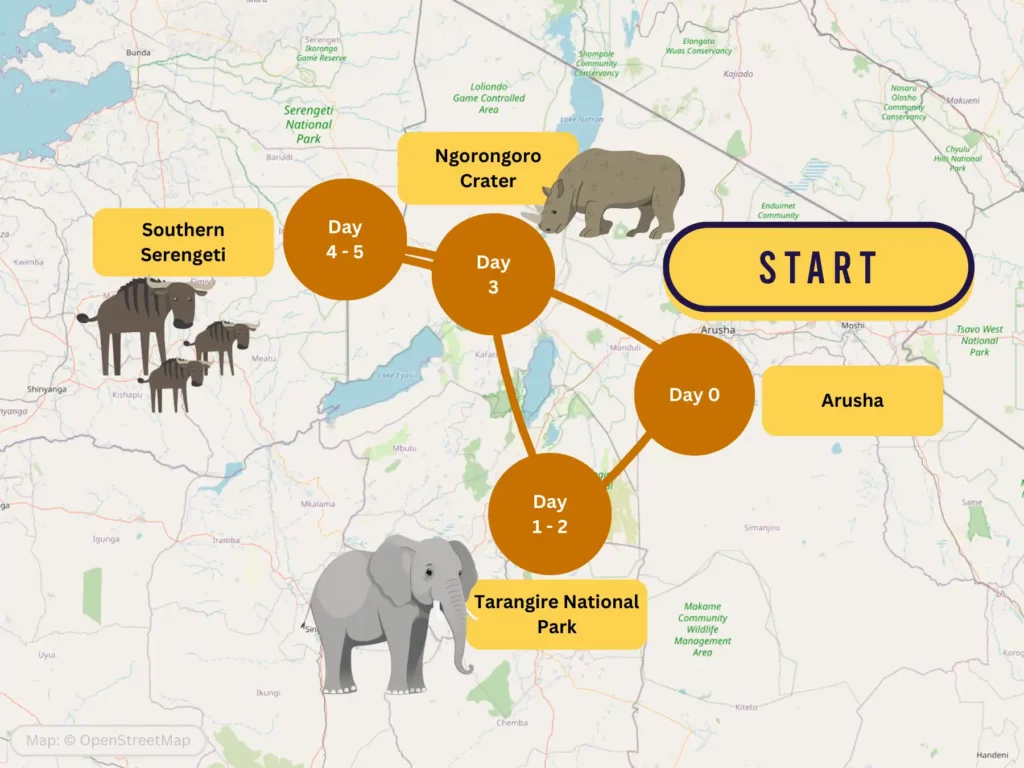
Day By Day Breakdown for my 5 Day January Itinerary
Day 1: Tarangire
Driving time (excluding game drives): 3 hours
You will enjoy a delicious breakfast at your hotel in Arusha before you will be picked-up by your tour operator. You will then embark on a 3 hour journey from Arusha to Tarangire’s northern gate.
You will arrive at Tarangire by mid-morning, in time to enjoy a nearly full-day game drive through the park.
In January the foliage in Tarangire is thick and green. This provides a beautiful backdrop to any photos that you wish to take.
No amount of foliage can conceal an elephant, of which you can expect to see a few, as this is what Tarangire is most famous for.
Other animals that you can expect to see include giraffes, buffalos, zebras, impalas, baboons, warthogs and lions. Leopards and cheetahs can also be found here but they are harder to spot.
You will stop for a picnic lunch part-way through the day before continuing your safari.
You will end your game-drive as evening starts to fall and will retire to your accommodation for the night within Tarangire National Park.
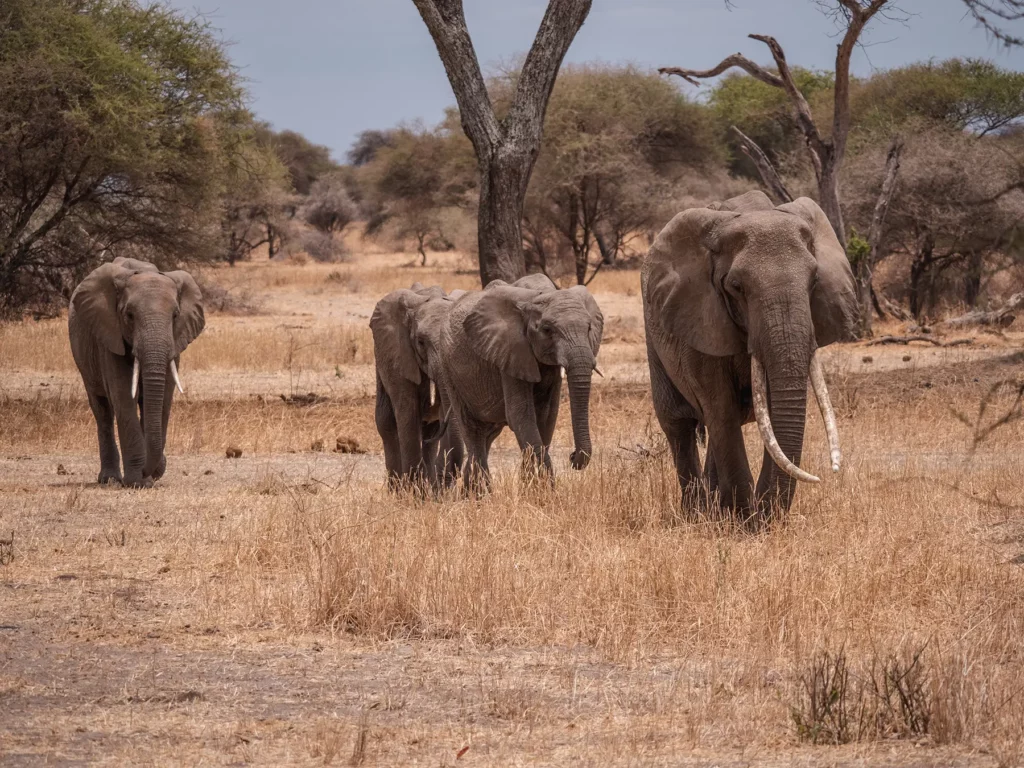
Day 2: Tarangire
Driving time (excluding game drives): 3 hours
This morning you will get the chance to go on a safari through Tarangire starting in the early morning. Morning game drives are my absolute favourite as they give you the best chance to spot Tanzania’s elusive predators. If your dream is to see a predator hunting then dawn is your prime time!
You will commence your safari into the afternoon, stopping for some lunch on the way.
After your game drive you will then journey to the town of Karatu, about 3 hours away from Tarangire. It’s here where you will spend the night.
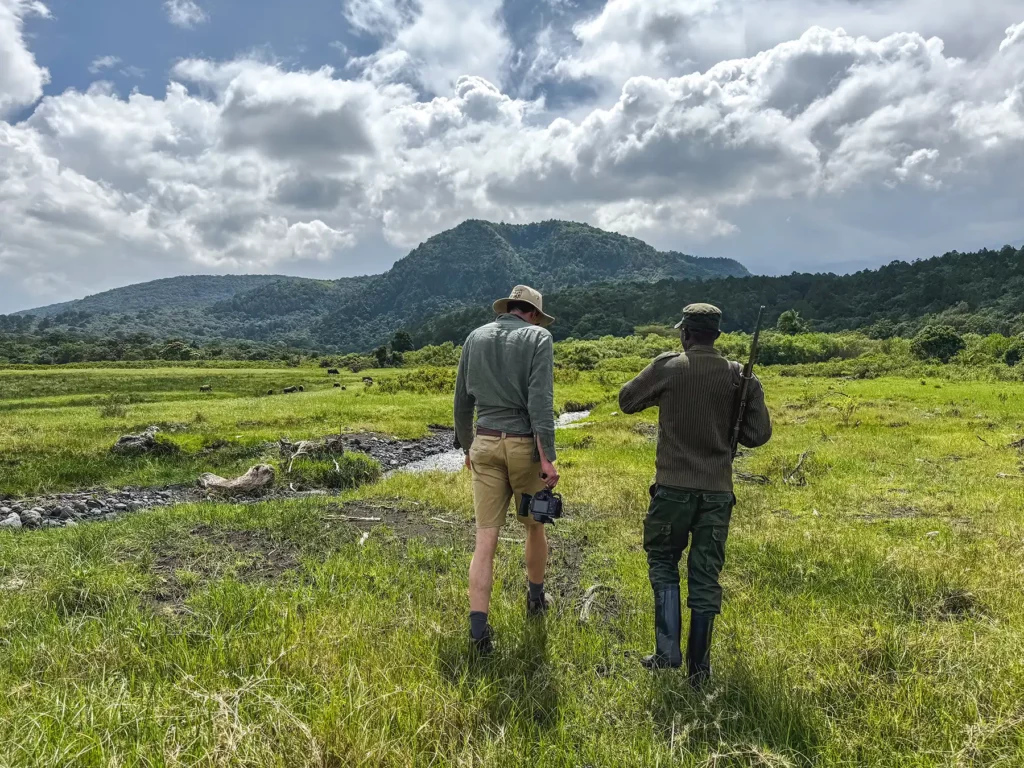
Day 3: Ngorongoro Crater
Driving time (excluding game drives): 2 hours
This morning you will go on a full-day safari within the spectacular Ngorongoro Crater. This involves driving along the crater rim, through thick swathes of forest, before descending down the 600 metre high crater walls.
You’ll drive along the crater floor, watching for Ngorongoro’s famous residents. It’s the only place in Tanzania where you can hope to spot all of the Big Five: lions, elephants, buffalos, leopards and rhinos.
You will stop part-way through the safari for a picnic lunch on the banks of Lake Magadi, before commencing your game drive.
In the afternoon you will leave Ngorongoro Crater and journey to the Nduti Plains which sit just below Serengeti. Although this area is technically part of the Ngorongoro Conservation Area, I like to refer to it as southern Serengeti as it is all part of the same ecosystem.
It is here where you can find the Great Wildebeest Migration in January.
You will spend the night in the Ndutu region, ready for an early morning safari tomorrow.
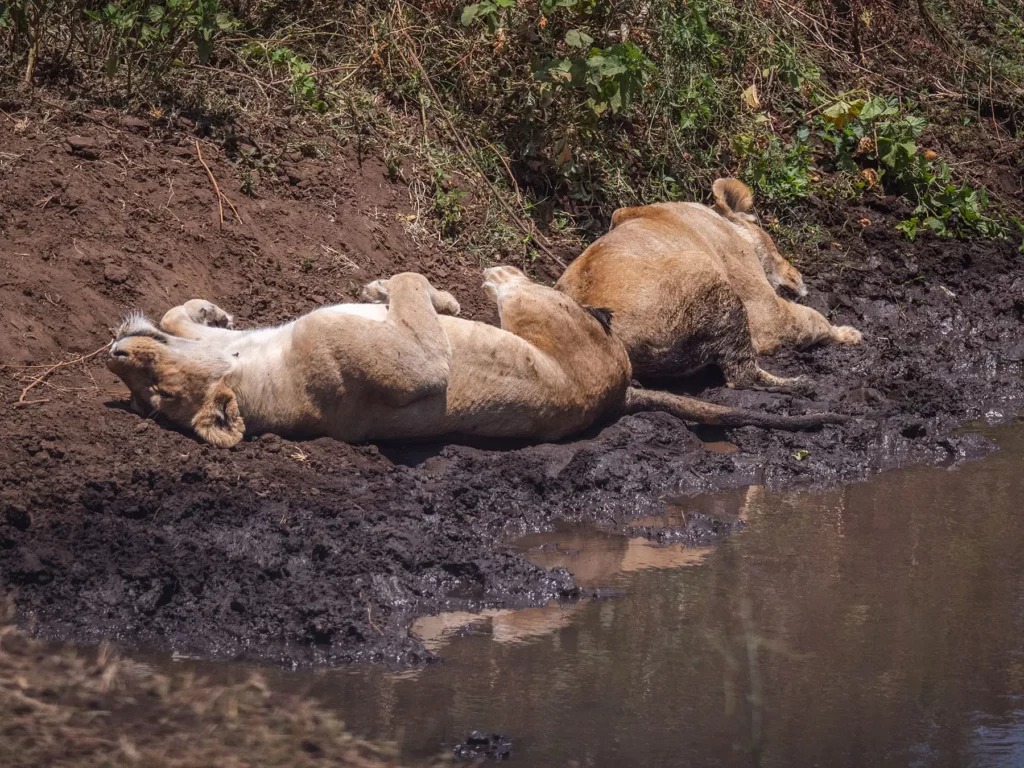
Day 4: Southern Serengeti
Driving time (excluding game drives): 0 hours
You will spend the entirety of today in southern Serengeti. Your safari will start early in the morning, giving you the best possible chances of seeing predators in action. Lions, cheetahs, leopards and hyenas can all be found here.
The main event however in Ndutu is the wildebeest calving. From mid-January, baby wildebeests start to be born in their thousands. Watching them take their first steps is a truly magical moment.
Having an entire day in the region allows you to soak up not only the vastness of the Serengeti plains but will give you the best chances to spot all that you wish to see. Elephants, giraffes, buffalos and zebras are some of the many wildlife residents you can see here.
Your day will be broken-up by a picnic lunch at a scenic site within the park.
You will spend a second night in Ndutu.
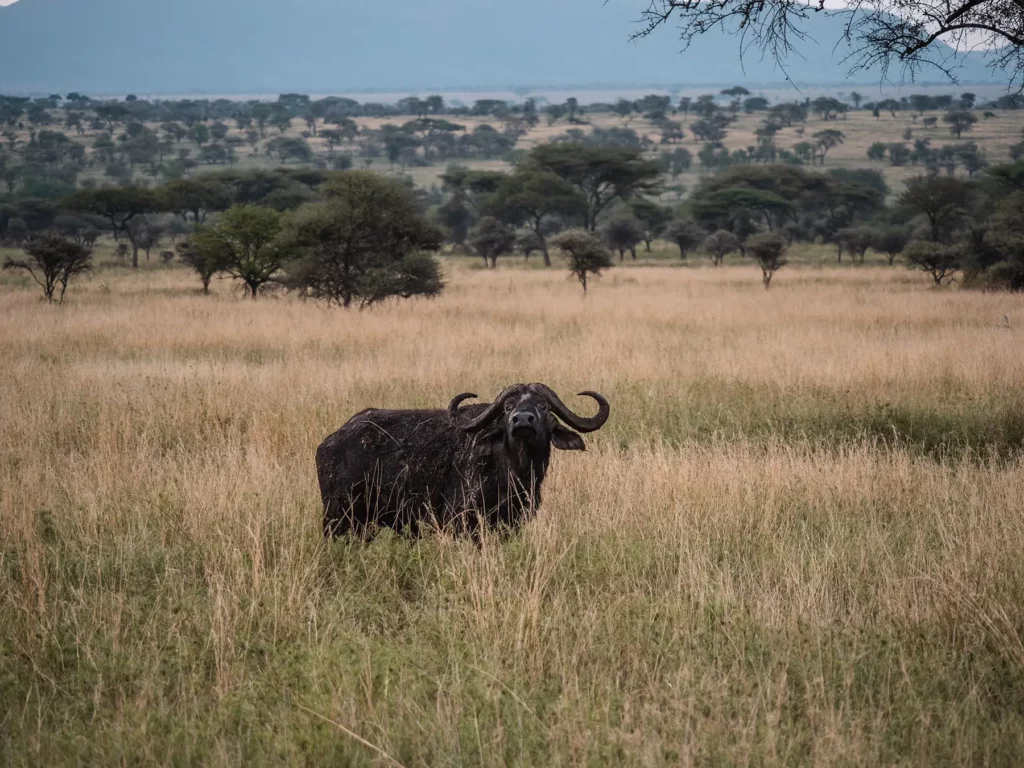
Day 5: Southern Serengeti to Arusha – total drive time (excluding game drives) 5.5 hrs
For your final day you will embark on another morning safari in southern Serengeti, giving you one more opportunity to witness Tanzania’s predators as they go about their morning wanderings.
After your morning safari, you will leave southern Serengeti and drive back to Arusha which takes 5.5 hours.
Recommended Booking Options For Your 5-Day Tanzania January Safari Itinerary
Private Safari
Most popular & best experience – typical prices for this itinerary start from $280 per person per day.
Visit safarisbyella.com for free quotes from trustworthy local tour companies I use to book my own trips.

Group (Shared) Safari – Usually Camping
Good for budget or solo travellers – from $160 per person per day.
My recommended Tanzania tour operators only provide private safaris, however, I’ve listed the best and most similar group options for this itinerary, on SafariBookings below.
Click the link below to request quotes for the group safari options on the SafariBookings website.
5-Day Budget Camping Group Safari Option 1
5-Day Budget Camping Group Safari Option 2
View All My Recommended Group Options Following a Similar Itinerary
3 Day Tanzania in January Itinerary
Although tight, it is possible to go on a 3 day safari in northern Tanzania and include the Serengeti.
I’d personally recommend spending longer than 3 days on safari. However, if your itinerary doesn’t allow for an extended stay then this is my recommended 3 day safari itinerary for your January visit to Tanzania.
Itinerary Map
Itinerary starts and ends in Arusha.
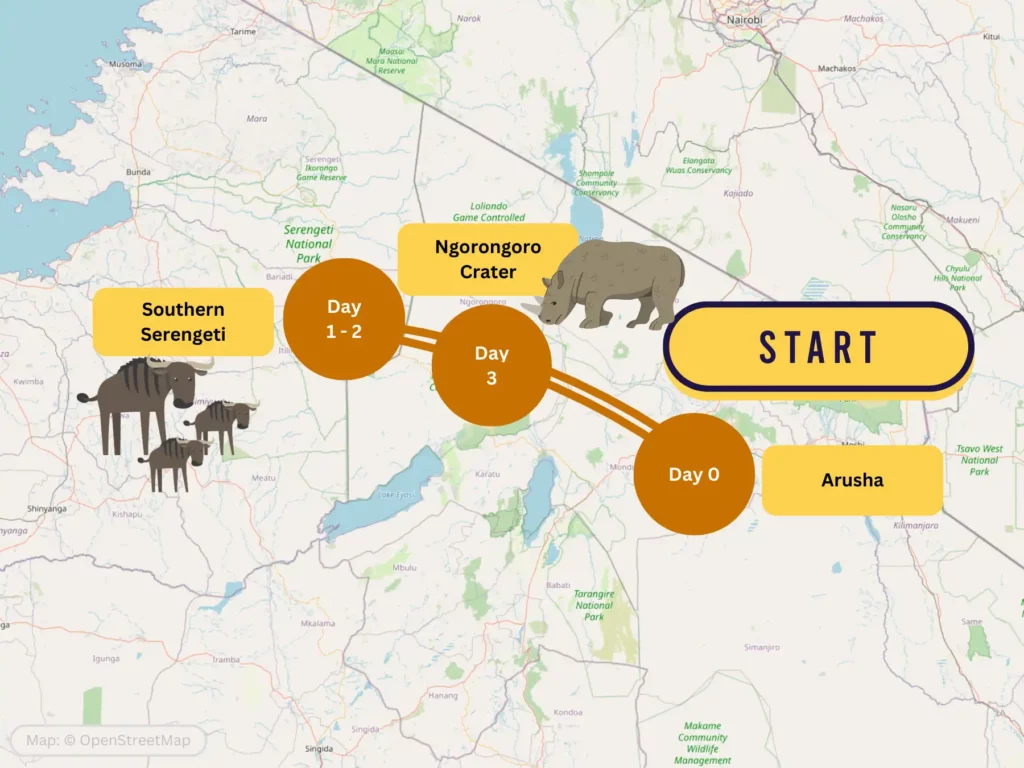
Day By Day Breakdown for my 3 Day January Itinerary
Day 1: Southern Serengeti
Driving time (excluding game drives): 5.5 hours
Your itinerary starts in the lively city of Arusha. Today you have a long drive ahead of you that will take just under 6 hours. Your destination is the Ndutu region in southern Serengeti.
You should arrive in southern Serengeti in the afternoon, in time for an evening game drive through the vast open plains. Serengeti means ‘endless plains’ in the local Maasai language.
The Ndutu region actually sits just below the gate to the Serengeti National Park and is technically part of the Ngorongoro Conservation Area which together make up the Serengeti ecosystem. There’s no fencing between the two so wildlife can flow freely through them both.
At this time of year, Ndutu is filled with migrating wildebeest. It’s the calving season so you can expect to see newborn wildebeest calves skipping through the plains.
You will spend the night in the Ndutu region.
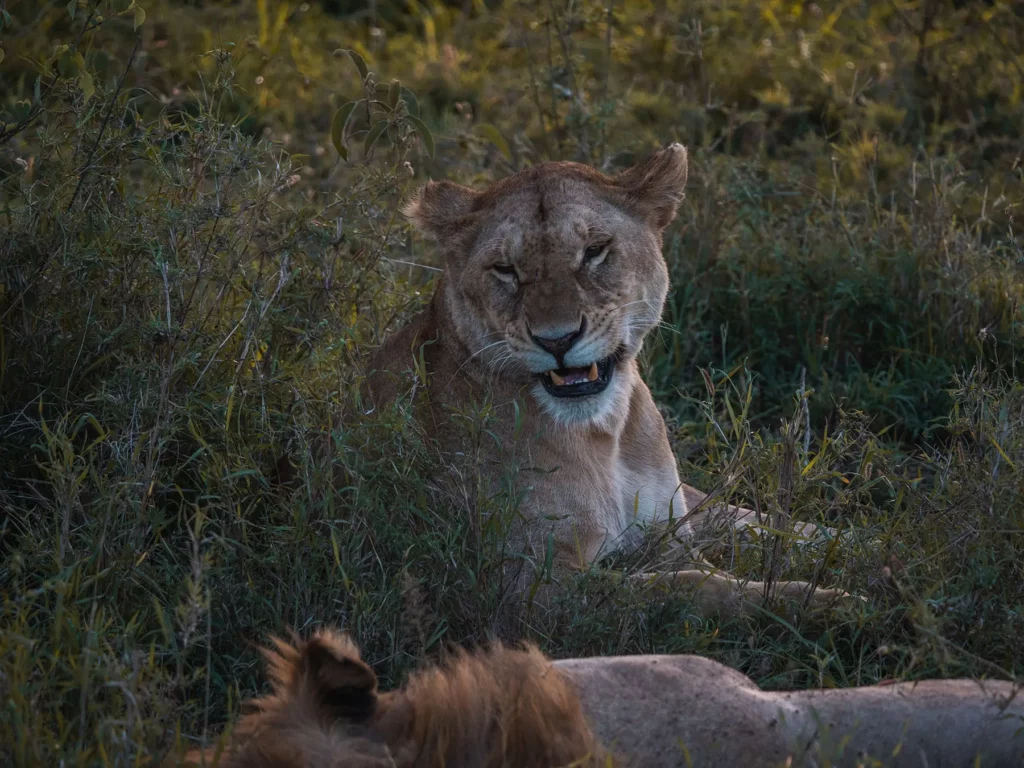
Day 2: Southern Serengeti
Driving time (excluding game drives): 2 hours
This morning you will embark on a full-day safari which starts in the early morning. The early start gives you the highest possible chances of seeing the Serengeti’s predators. If you’re extremely lucky you may even see them hunting. Lions are the most commonly seen predator here however you can also encounter leopards, cheetahs and hyenas.
You will pause part-way through your game drive to enjoy a picnic lunch in a beautiful location, surrounded by nature.
Your safari will take you into the afternoon. You will then journey through the Ngorongoro Conservation Area to the rim of the Ngorongoro Crater.
There are a handful of lodges and camps here, the ideal location to spend the night.
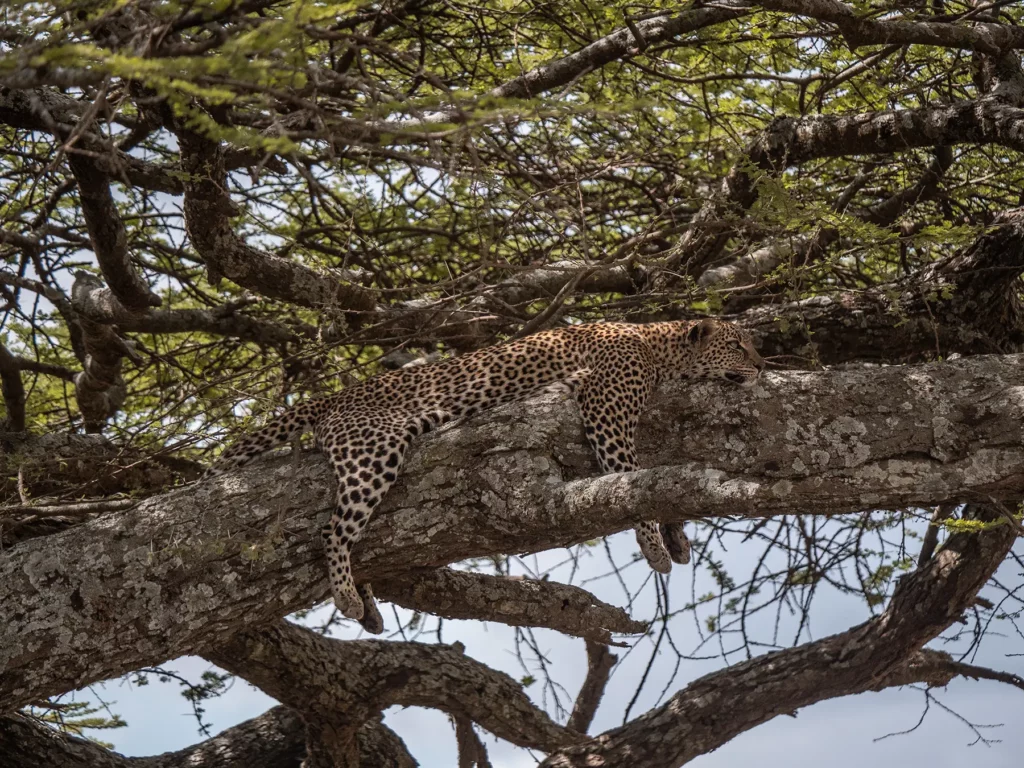
Day 3: Ngorongoro Crater
Driving time (excluding game drives): 3.5 hours
This morning you will descend into Ngorongoro Crater and find yourself enveloped in a unique landscape that is teeming with life. Within the towering crater walls you can find elephants, lions, zebras, wildebeest and so much more. The star of the show however is the black rhino.
After a morning safari, you will enjoy a picnic lunch beside a hippo pool before continuing your search for wildlife.
In the afternoon you will leave the beautiful crater and embark on a 3.5 hour drive to Arusha where your itinerary will end.
Recommended Booking Options For Your 3-Day Tanzania January Safari Itinerary
Private Safari
Most popular & best experience – typical prices for this itinerary start from $300 per person per day.
Visit safarisbyella.com for free quotes from trustworthy local tour companies I use to book my own trips.

Group (Shared) Safari – Usually Camping
Good for budget or solo travellers – from $200 per person per day.
My recommended Tanzania tour operators only provide private safaris, however, I’ve listed the best and most similar group options for this itinerary, on SafariBookings below.
Click the link below to request quotes for the group safari options on the SafariBookings website.
3-Day Budget Camping Group Safari Option 1
3-Day Budget Camping Group Safari Option 2
View All My Recommended Group Options Following a Similar Itinerary
Final Thoughts
January is a fantastic time to visit Tanzania. Not only is it great for wildlife viewing, the weather is pleasant and relatively predictable, and there are fewer tourists here at this time of year, making parks less congested.
Mid to late January is one of the best times of year to witness the great migration as the wildebeests start to give birth. This also makes it a great time to spot big cats hunting.
Therefore, if you are considering visiting Tanzania in January, I say go for it! You won’t be disappointed.
Read More Tanzania Guides
For an overview of planning your safari, you can read my Ultimate Tanzania Safari Guide.
Tanzania Itineraries
Recomended itineraries and how to book them.
7-10 Day Tanzania Safari Itinerary & Costs
5-Day Tanzania Safari Itineraries & Costs (6 unique Itineraries)
3-Day Tanzania Safari Itinerary & Costs
2-Week Tanzania & Zanzibar Safari Itinerary & Costs
3-Week Tanzania Safari Itinerary & Costs
10-Day Tanzania Honeymoon Itinerary & Costs
Tanzania and Kenya Itineraries
Multi-country itineraries and how to book them.
10-Day Kenya and Tanzania Safari Itinerary
2-Week Kenya & Tanzania Safari Itinerary
Costs & Planning
How to get the most bang for your buck and the best time of year to visit depending on what you want to do and see.
Tanzania Safari Cost – Everything You Need to Know!
The Great Wildebeest Migration Guide
Zanzibar Island – The Complete Guide
National Parks & Reserves
Complete guides to the best and most famous safari reserves, including the wildlife you’ll see, entrance costs and best time to visit.
Other Popular Safari Destinations
How to Book Your Safari
Save time and ensure an incredible safari experience by getting quotes from my recommended local safari companies.
Join the rapidly growing tribe of over 1,000 travellers who’ve booked their dream safari using my insider tips and recommendations.

Great article.
However, it’s not accurate to say that January offers better rates than July through September. From 20th December through March, the Great Migration is in the Ndutu area, which is also considered high season. During this period, accommodation rates are generally the same as in the peak months.
Still, a great read.